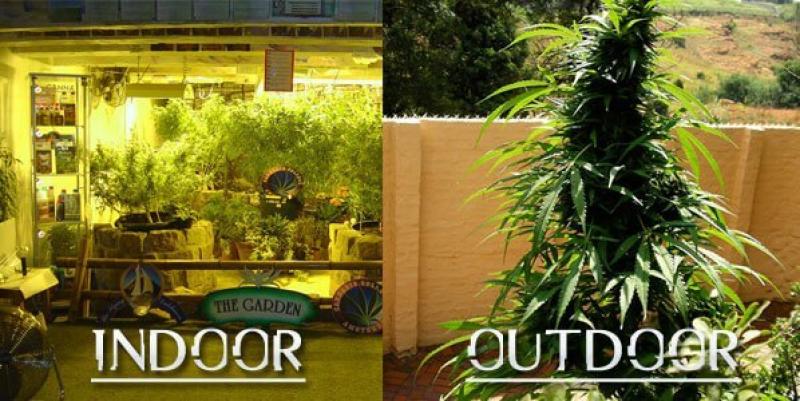Indoor vs. cannabis cultivation outdoor: 3 differences
Cannabis has long been grown outdoors and is one of the oldest agricultural crops. Indoor cannabis cultivation, on the other hand, is less than a century old, and originally came about as the result of prohibition and changing laws. Yet most of the advances in cannabis production have occurred during the age of indoor culture.
Moving indoors was originally a way for growing to less exposure to law enforcement. As technology evolved, the cannabis industry was able to expand its knowledge of the plant by leaps and bounds, and this was also true in areas known for their large outdoor growing cultures such as South Oregon or North California.
The differences between indoor and outdoor cultivation are important for cannabis producers, but they are also important for consumers to understand so that they can determine what the best strain for them is when buying at a dispensary. This is true whether the consumer is purchasing an edible, CBD oil or flower to use in a glass bong or vaporizer.
A Natural Environment Vs. A Controlled One
The environment affects the results of a harvest and there are many reasons to grow indoors rather than outdoors. The freedom to choose a place with minimal constraints and the ability to control the environment are just a few. Controlling temperature, light sources, CO2 production and humidity creates a stable habitat for optimizing plant growth without the risk of "outside" disturbance.
On the other hand, although there are some nice improvements in the latest generations of LEDs, sunlight is hard to reproduce. Outdoor cultivation requires a climate adapted to the plant, with good exposure, hot days, not too cold nights and little humidity.
Indoor crops may also have some complications. Recreate a natural environment indoors can be complicated, especially in the fight against pests (mites, spiders, midges ...). If they appear in an enclosed space, they can be quite difficult to eradicate.
Cost Differences
Both types of crops require significant up-front costs, but the difference is really long-term. The indoor climate control system can cost a small fortune while most of the costs associated with outdoor planting lie in the start of the operation.
In a cannabis growing business, the costs associated with workers also vary between an indoor plantation and an outdoor plantation. In an indoor garden, there is always something to do: pruning, trimming, watering, feeding ... Outside, there is usually only one harvest per year. A large plantation may only need four people until harvest.
The high costs of inland agriculture can be cushioned by breeding projects, year-round harvests and more powerful products. Indoor growing also makes it possible to grow inappropriate varieties in the local environment. Outdoor planting, with rising energy prices and a growing demand for cannabis flowers, can be an alternative for quality products at a reasonable price.
Quality Of Cannabis
Indoor cannabis has long been known to produce high-end products. The ability to control the environment and the acceleration of breeding have resulted in new cannabis varieties with multiple and varied organoleptic profiles. The introduction of high levels of CO2 promotes head growth and increases the production of THC difficult to reproduce outdoors. The heads do not have to fight against the rain, the wind or any natural element which could damage them.
Outside, the flowers are of course not perfect, but the aromas and effects are preserved. Some prefer organic cannabis cultivated outdoors to the indoor alternative. Be that as it may, some commercial plantations now use both methods. This type of crop produces quality results, which is quite exciting to observe in this new industry.
